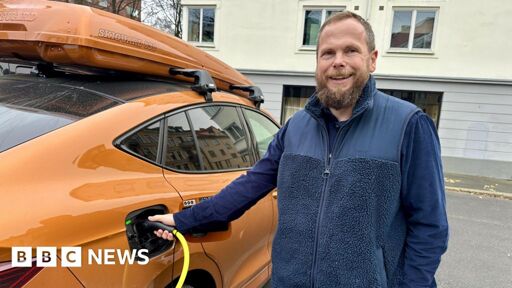Summary
Norway leads the world in electric vehicle (EV) adoption, with EVs making up nearly 90% of new car sales in 2024 and over 30% of all cars on its roads.
This shift, driven by decades of policies like tax exemptions for EVs, higher taxes on fossil fuel cars, and perks like free parking, has put Norway on track to phase out new fossil fuel car sales by 2025.
The country’s wealth, renewable hydroelectric power, and extensive charging network have enabled its EV revolution, serving as a model for other nations.



Yeah. It’s the range that’s killer. EVs can run in cold all day long. But running heavy duty heating to keep the cabin comfortable and the windows clear of ice, plus heating the battery pack to maintain performance, can cut the already overstated manufacturer range down by 30-40% or more. Which can bring a marginally OK travel range in a lot of areas down to “shit this isn’t enough”.
deleted by creator
Who can’t charge at home? Who is getting an EV before electricity in their house?
deleted by creator
We do it with hydrogen cars… I don’t see the difference here.
The difference is that ICE cars are the gold(bronze? It’s not a high bar… just the one we’re used to) standard to currently beat. When Electric is just as convenient or better than ICE, I’m willing to bet that people will start to argue the other way. We already see it with people who can get away with Electric at home. It’s all they can go on about with how convenient that is… So much so that they seem to forget that it’s only convenient for them because they’re lucky enough to meet the requirements to make it convenient.
deleted by creator
The point is exactly that… “this is the world we live in”… And as that world evolves, or as technologies and consumer desires changes, what people will complain about will change as well.
If there were no gas stations around… I would blame ICE cars for needing gas and thus would choose something else that fits my needs better. The point is that infrastructure exists and is part of the package of buying the vehicle. It’s fair game for discussion, and thus blame.
deleted by creator
It’s not the infrastructure’s fault I bought the car that I can’t feed with whatever energy source it uses.
If I buy a car knowing that the infrastructure is lacking then the car causes me problems doesn’t it? Or lets say infrastructure disappears because of demand (or lack thereof), the car becomes useless, no? These things are linked.
Apartments are seriously lagging on getting EV stations installed. Then there’s the issue of running power from the tenants meter to a dedicated parking spot (which would require cutting up sidewalks and the like). Even on a condo it can be a mess with the HOA.
There are plenty of landlords that won’t allow a tenant to install an EV outlet even on a SFU.
Let’s rethink this. The owners could have a dedicated electric line for charging. Then have power stations along the parking spots. People would then use their credit/debit cards to pay for the electricity just like we do at gas pumps.
And then you get landlords/complex owners gouging to charge your car.